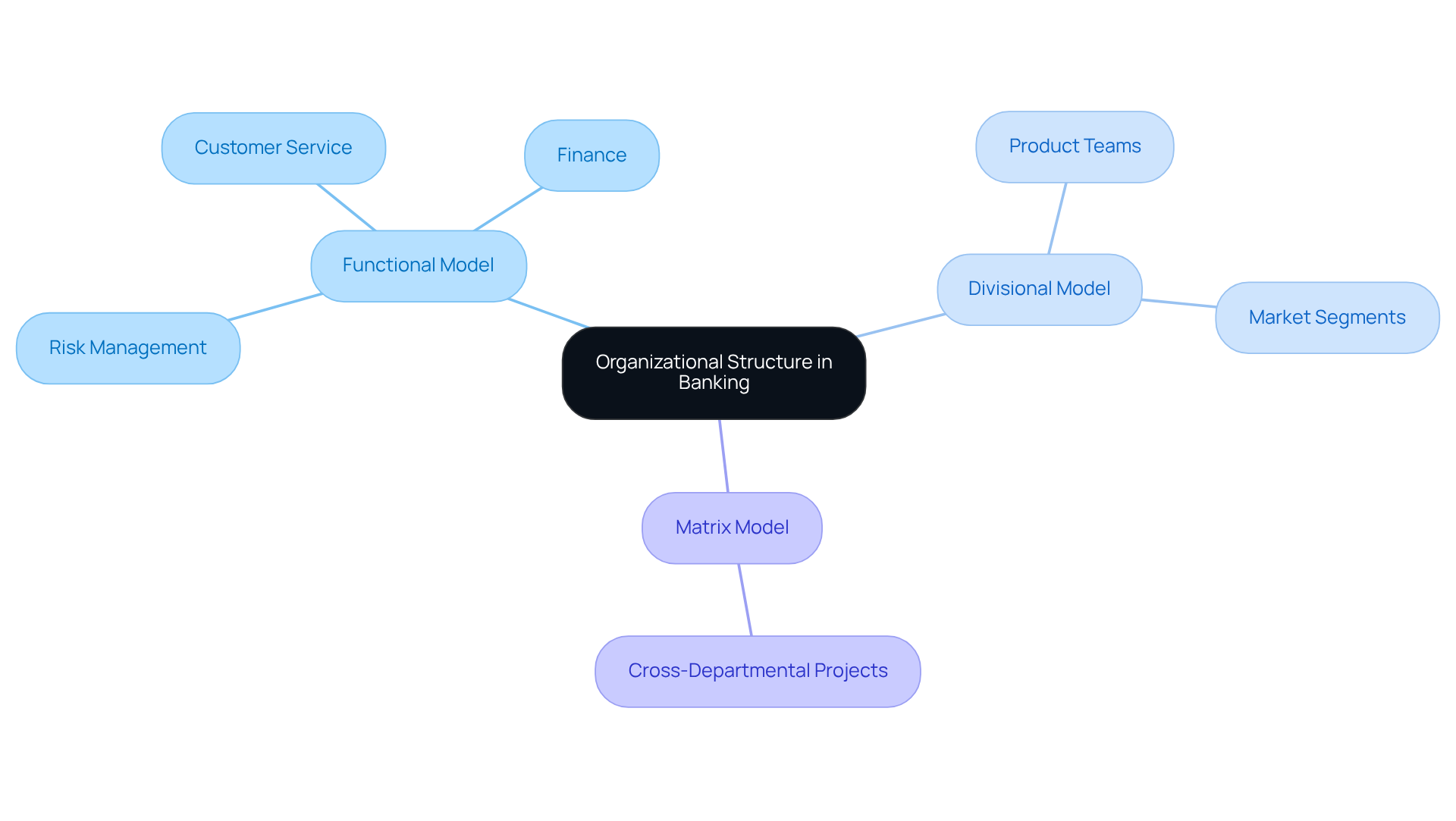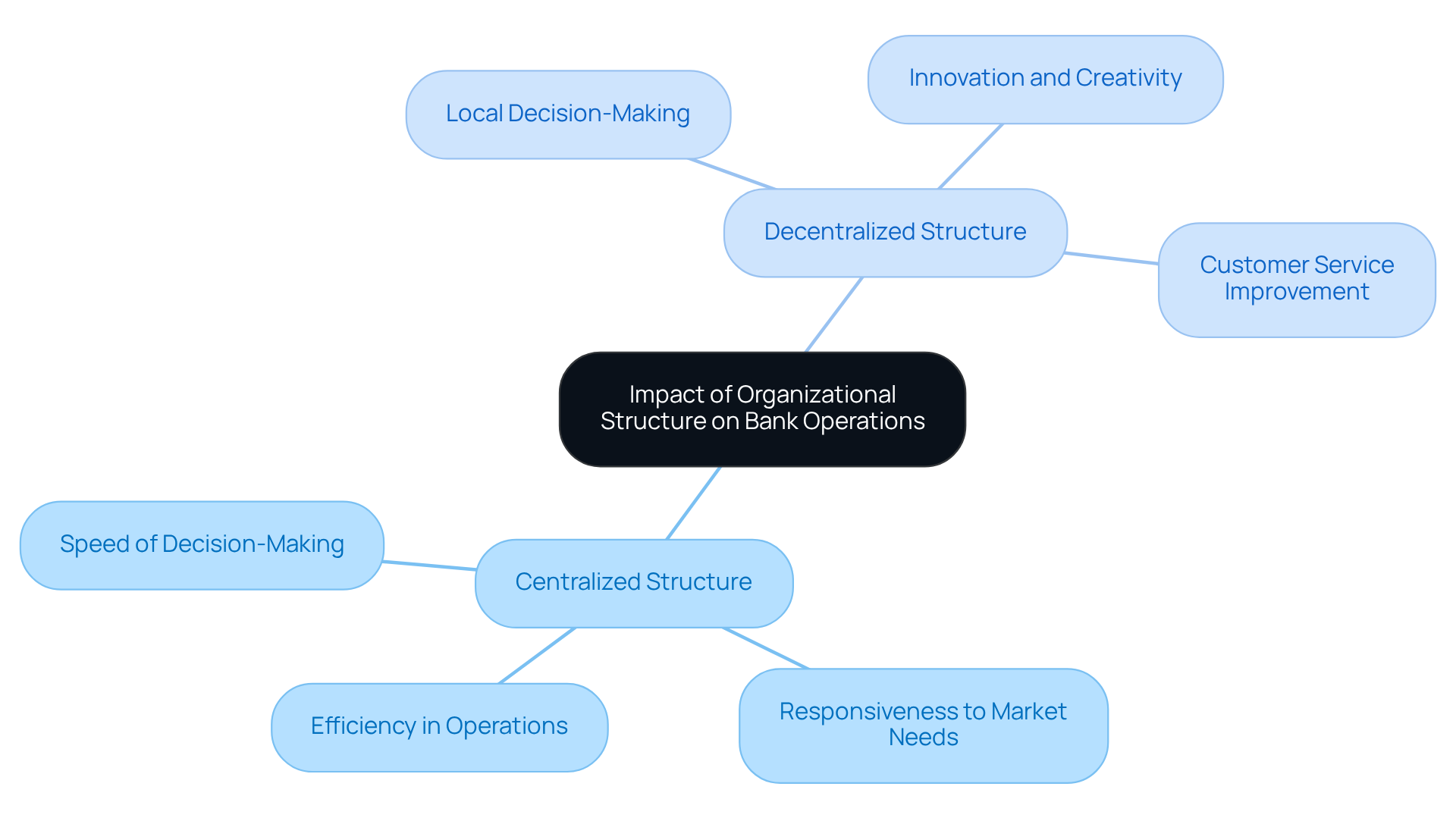
Knowledge Management through Documentation
|
November 11, 2025
|
Understanding Organizational Structure for Banks: Key Roles and Impacts
Key Highlights:
- The organisational structure in banks defines task execution, responsibility hierarchy, and departmental roles.
- Common models include functional (grouped by roles) and divisional (grouped by products/markets) arrangements.
- A well-defined structure enhances communication, decision-making, and overall bank performance.
- The Board of Directors plays a crucial role in strategic direction, supported by committees like Audit, Risk, and Compliance.
- Diversity in board composition has been linked to improved institutional performance.
- The effectiveness of governance policies has increased with more frequent board evaluations.
- Organisational structure impacts daily operations, influencing decision-making speed and responsiveness to market needs.
- Centralised structures may expedite decision-making but can hinder local responsiveness, while decentralised structures promote innovation and customer service.
- Future changes in banking will necessitate a reevaluation of organisational structures to remain competitive.
Introduction
You might be wondering how banks really operate, right? Well, it all starts with their organizational structure, which is like the backbone of everything they do. This framework not only lays out who’s responsible for what but also plays a big role in how efficiently things run, how engaged employees feel, and how well the bank performs overall.
As these financial institutions face a more complex world, a key question pops up: how can a clear organizational structure help them adapt and innovate while tackling the rapid changes coming our way? Diving into this topic can give us some valuable insights into how governance and structure shape the future of banking. So, let’s explore this together!
Define Organizational Structure in Banking
You might be wondering how the organizational structure for banks actually functions. Well, think of it as a framework that lays out how tasks get done, who’s in charge, and how everything fits together to help the bank reach its goals. This setup creates a hierarchy, making it clear what different departments and individuals are responsible for. You’ve probably heard of common models like functional, divisional, and matrix designs—each one tailored to meet specific needs.
For instance, a functional arrangement groups employees by their specialized roles—like risk management, customer service, and finance. This setup can really boost efficiency within each department. On the flip side, a divisional arrangement organizes teams around specific products or markets. This way, they can focus more on what customers need, which can lead to better performance and quicker responses. It’s all about fostering innovation and agility in how products and services are developed and delivered.
Now, let’s talk about why this all matters. The organizational structure for banks plays a crucial role in determining how well they operate, the level of employee engagement, and their overall performance. A well-defined framework encourages effective communication and decision-making, which is super important in today’s fast-paced financial world. Experts say that an efficient organizational structure for banks not only streamlines operations but also helps align strategies, enabling institutions to adapt to market changes and regulatory demands more effectively.
Looking ahead to 2025, the influence of company structure on how financial institutions operate is going to be even more crucial. As companies strive to balance efficiency with the need to adapt to tech advancements and shifting consumer demands, understanding and refining their organizational structure for banks will be key. By doing so, they can enhance service delivery and maintain a competitive edge in the industry. So, what do you think? How does your organization stack up?

Explore Key Roles and Committees in Banking Governance
You might be wondering about the role of the Board of Directors in financial governance. Well, they’re pretty crucial when it comes to steering the institution's strategic direction and making sure everything aligns with regulatory standards. But they don’t do it alone! They’re backed by specialized committees like the Audit Committee, Risk Committee, and Compensation Committee, each with its own set of responsibilities.
- The Audit Committee is all about keeping the integrity of financial reporting intact.
- Meanwhile, the Risk Committee is on the lookout for potential risks that could throw a wrench in the institution's operations.
- And let’s not forget the Compliance Officer, who ensures that the financial institution ticks all the boxes when it comes to legal and regulatory obligations.
Understanding these roles is key to grasping how financial institutions maintain their operational integrity and protect stakeholder interests.
Now, here’s something interesting: a case study on board effectiveness shows that institutions with diverse and engaged boards often outperform their peers. This really highlights how strong governance can boost a financial institution's performance. Did you know that 99% of institutions reported having an average of two female board members? Plus, 95% have at least one board member from an ethnic or racial minority. This just goes to show how important diversity is in governance.
As Randy McGraw pointed out, there’s been a noticeable uptick in adherence to governance policies since board evaluations have become more frequent. It really underscores just how essential effective governance is in the banking world. So, what do you think? How does your institution stack up in terms of governance?

Analyze the Impact of Organizational Structure on Bank Operations
You might be wondering how a bank's organizational framework impacts its day-to-day operations. Well, it turns out, it plays a huge role! From how information flows to how decisions are made, a well-defined framework can really boost efficiency. By clarifying roles and responsibilities, it helps cut down on redundancy and confusion.
For example, a centralized setup might speed up decision-making, but it can also slow down how quickly a bank responds to local market needs. On the flip side, a decentralized approach allows local branches to make quick decisions, which can spark innovation and improve customer service. By looking into these dynamics, banks can pinpoint areas for improvement, helping them stay competitive in our fast-paced economic landscape.
Experts are saying that the next five years will see more change than the last thirty years combined! That’s a big deal, right? It really highlights how crucial it is for banks to rethink their organizational structures. Chris Skinner points out that focusing on customer-centric design and being responsive is key to surviving in today’s market. Plus, with AI innovations potentially saving the banking industry around US$1 trillion by 2030, it’s clear that making efficient decisions is more important than ever!

Conclusion
You might be wondering why understanding the organizational structure of banks is so crucial. Well, it’s all about navigating the complexities of the financial sector! This framework not only lays out how tasks get done and who’s responsible for what, but it also plays a big role in how efficiently banks can adapt to a fast-changing world. By picking the right structure—whether it’s functional, divisional, or matrix—banks can really boost their operational effectiveness and better meet your needs as a customer.
Let’s dive into some key insights from this exploration. Governance committees and the Board of Directors play critical roles in steering financial institutions. It’s interesting to note that there’s a positive link between diversity in governance and improved performance. Plus, the way an organization is structured impacts daily operations in a big way; it shapes decision-making, communication, and ultimately, how satisfied customers like you feel. As banks look ahead to 2025, it’s becoming clearer that they need to refine and adapt their structures to keep up with tech advancements and market demands.
In conclusion, a well-defined organizational structure in banking isn’t just about being efficient; it’s a key ingredient for long-term success and staying competitive. Financial institutions really need to align their frameworks with strategic goals and market expectations to thrive in this ever-evolving landscape. By embracing innovative designs and fostering effective governance, banks can enhance service delivery and position themselves to seize future opportunities.
Frequently Asked Questions
What is the organizational structure in banking?
The organizational structure in banking is a framework that outlines how tasks are completed, who is in charge, and how different departments and individuals contribute to the bank's goals.
What are some common models of organizational structure in banks?
Common models include functional, divisional, and matrix designs, each tailored to meet specific needs of the bank.
How does a functional organizational structure work?
A functional structure groups employees by their specialized roles, such as risk management, customer service, and finance, which can enhance efficiency within each department.
What is a divisional organizational structure?
A divisional structure organizes teams around specific products or markets, allowing them to focus on customer needs and leading to improved performance and quicker responses.
Why is the organizational structure important for banks?
The organizational structure is crucial for determining operational effectiveness, employee engagement, and overall performance. It facilitates effective communication and decision-making, which is vital in the fast-paced financial environment.
How does an efficient organizational structure benefit banks?
An efficient organizational structure streamlines operations, aligns strategies, and enables banks to adapt to market changes and regulatory demands more effectively.
What future trends are expected regarding organizational structure in banking by 2025?
By 2025, the influence of organizational structure on the operation of financial institutions will be increasingly important as they seek to balance efficiency with adapting to technological advancements and changing consumer demands.
👍
What others are liking
5 Steps to outline your ideal documentation structure
5 MINS READ
Where to start the your journey of mapping out your ideal documentation structure, aligning it with the very heartbeat of your organization?
Defining a winning level of detail in your process
3 MINS READ
What is too much detail, and what is too little? This article described in that winning level detail about what detail is enough.





